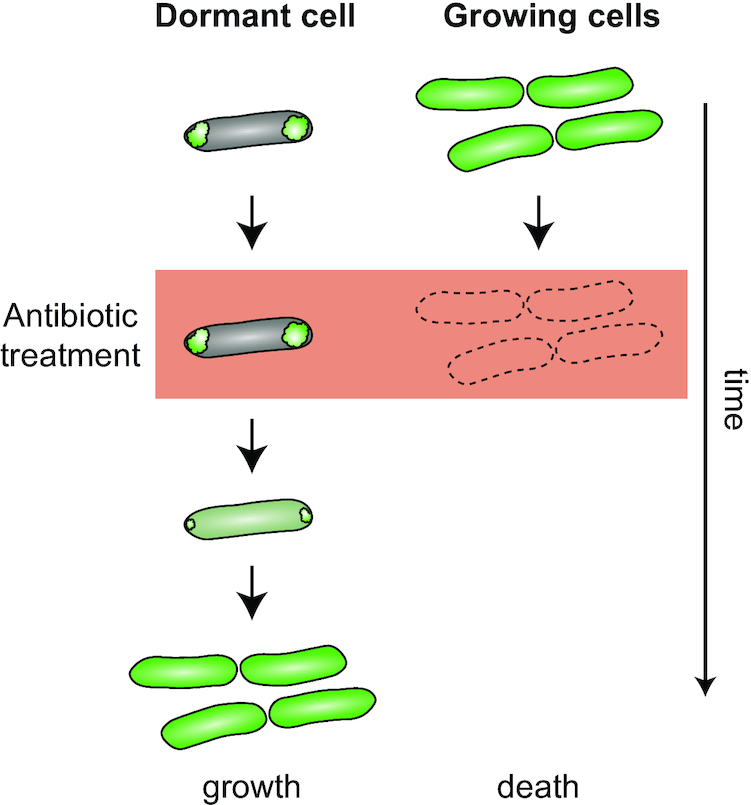Figure 7.

The potential impact of protein aggregation on bacterial antibiotic tolerance. After proteotoxic stress exposure, a population of E. coli cells is heterogeneous in its capability to resume growth. The aggregation of a large fraction of the proteome (green signal localized in foci instead of distributed throughout the cell as in growing cells) can render a cell inactive, or dormant, without causing its death. Dormant cells survive antibiotic treatment that otherwise kills metabolically active and growing cells. The exit from dormancy and resumption of the growth program is correlated with ATP-dependent protein disaggregation.
